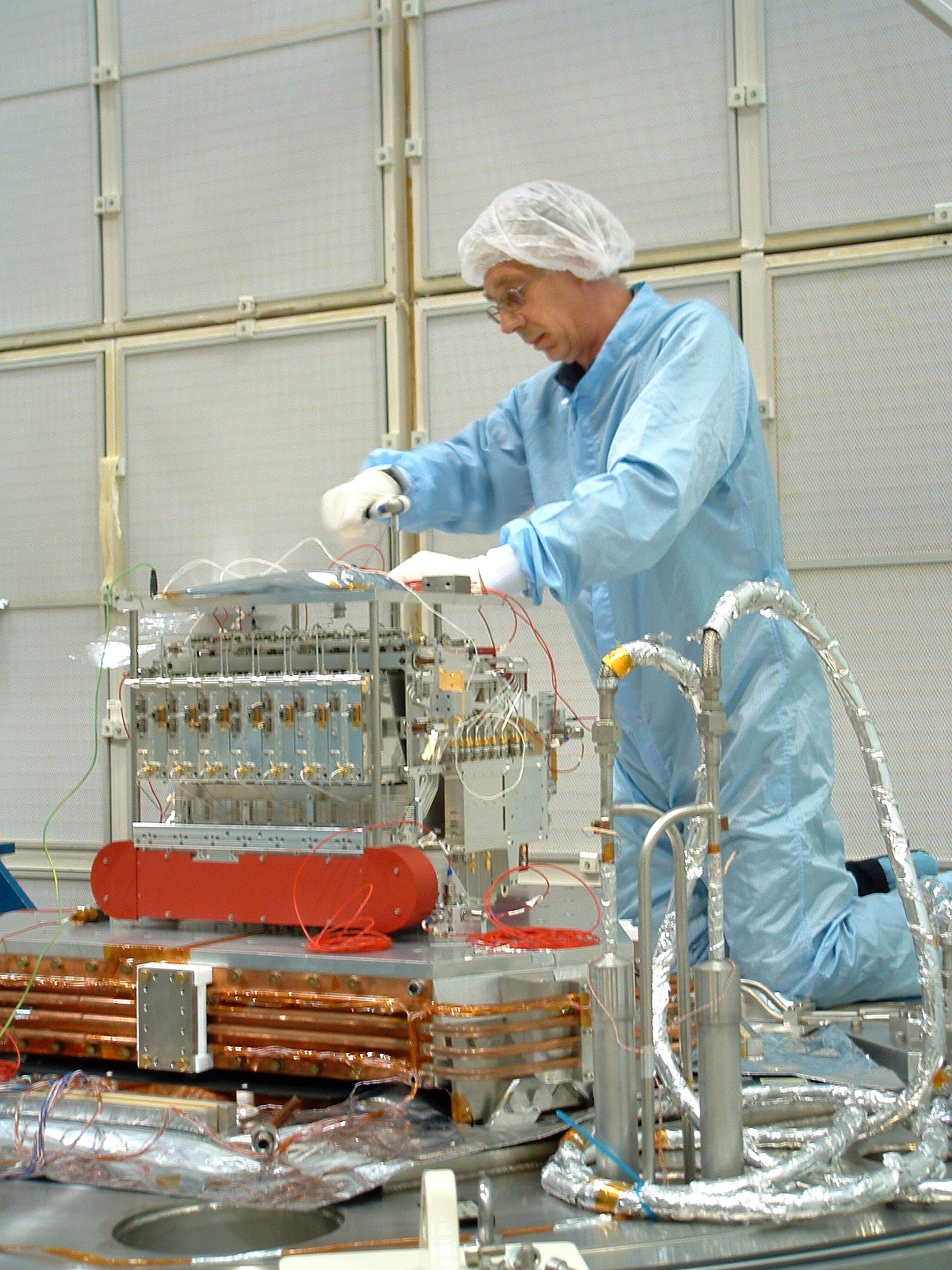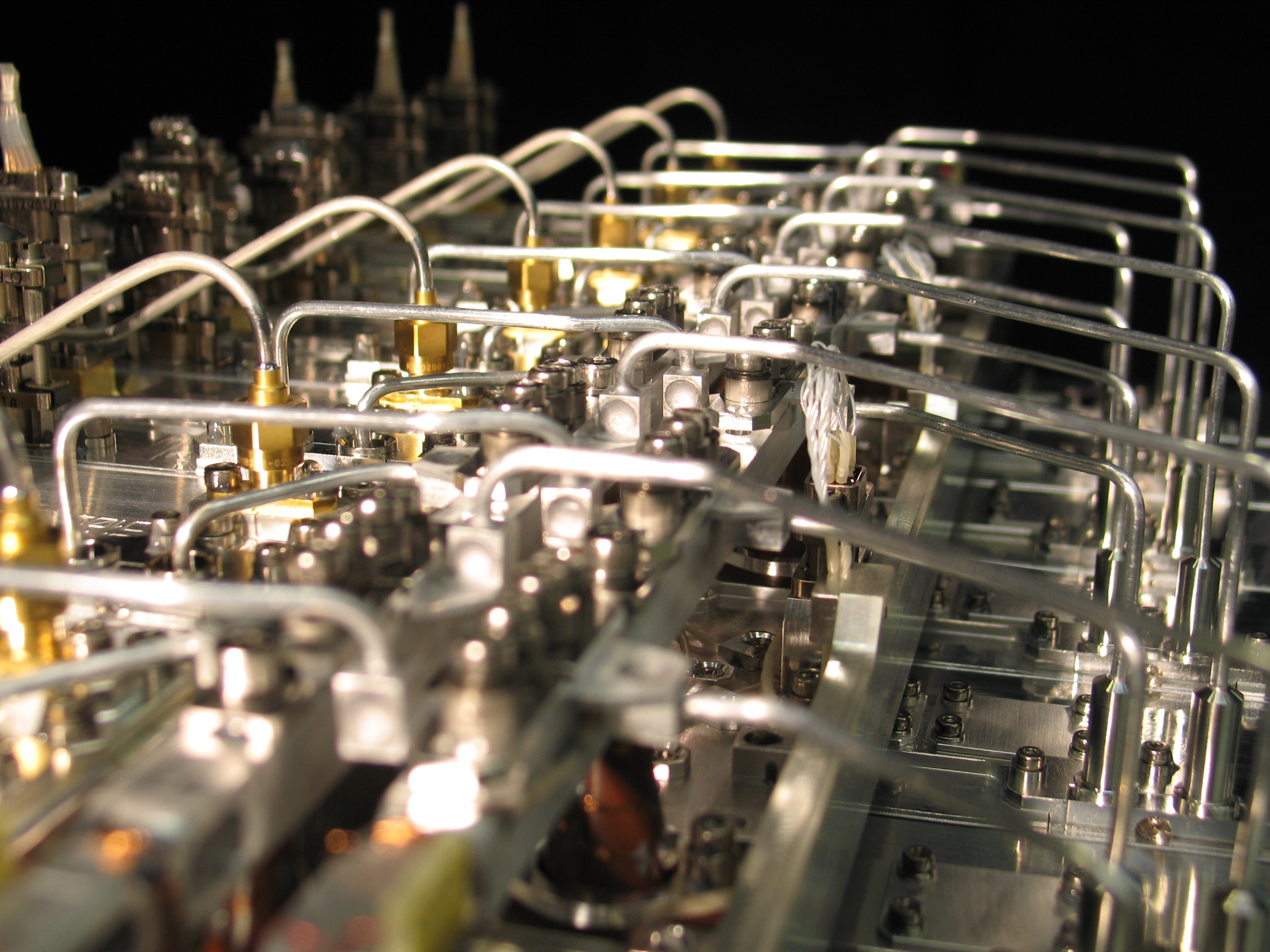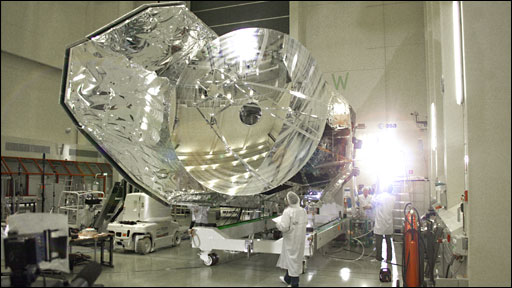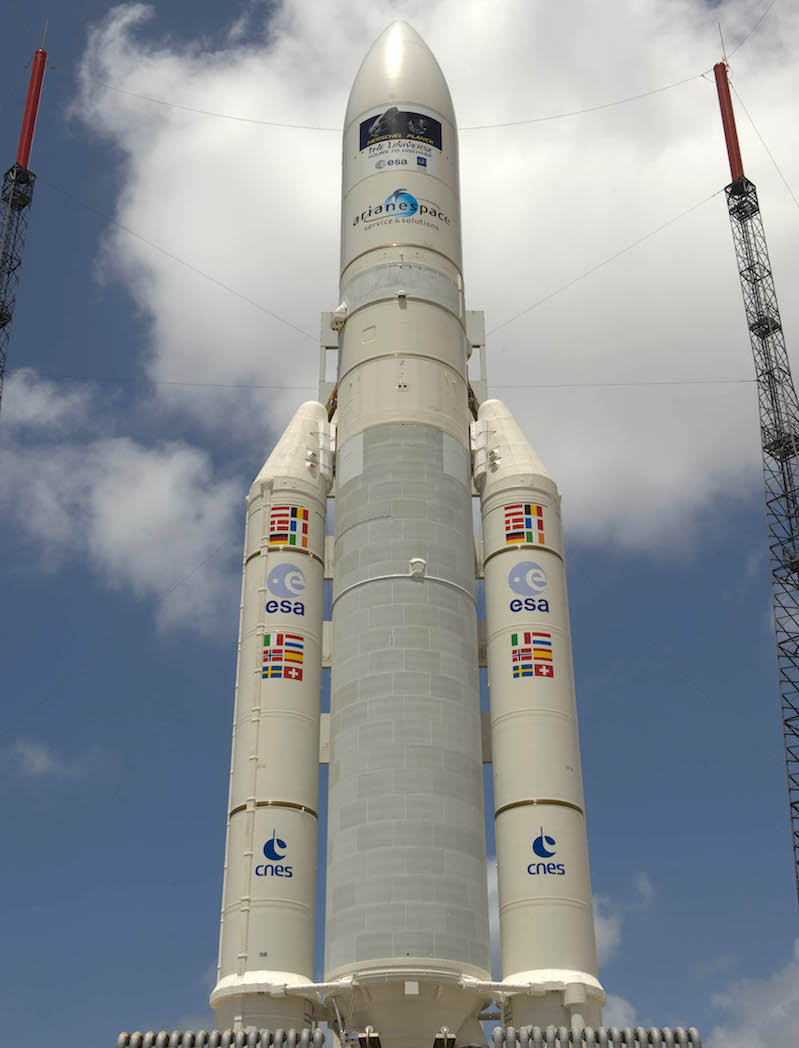



With the largest mirror to have ever flown in space at the time, 3.5 meters in diameter, Herschel (ESA, 2009-2013) captured images of dust clouds in far-away galaxies that were too faint for any previous infrared mission to see. The mission studied the origin and evolution of stars and galaxies. Herschel covered the electromagnetic spectrum between infrared and submillimeter: 55 to 672 µm.
Herschel made observations at the second Lagrange point of the Earth-Sun system (L2), 1.5 million km from Earth, and carried three scientific instruments. HIFI (Heterodyne Instrument for the Far-Infrared), one of the three instruments, was developed under supervision of SRON. Twenty-five partners from over ten countries were involved in HIFI. Each partner contributed their own specific knowledge. SRON was the Principal Investigator responsible for coordinating the cooperation.
Science
Thanks to HIFI, scientists now better understand the cosmic cycle of gas leading to for instance the birth of stars and planets and the role of water molecules in this process. The space between stars in our Milky Way is filled with clouds of gas and dust. New stars and planets form in these remnants of previous stellar generations–stars like our Sun and the planets in our solar systemour own. HIFI measures spectral lines within the radiation coming from the interstellar gas and dust, providing details about their cosmic cycle.
On the water trail
Water has been one of the most important targets for HIFI because of its high abundance in the Universe and because it plays an important role in star formation. Water is present in the tenuous torus of gas released from Saturn’s moon Enceladus, in gas streaming off comets, in planetary atmospheres and around stars. Water has been used to trace new types of shock waves in the formation processes of stars. It has also been used to detect material flowing onto a star in the very first stages of its formation and to probe the cold water reservoir in the outer regions of planet-forming disks, with the water released from ice by a weak UV radiation field triggered by cosmic rays. Together, these data allow astronomers to put together the water trail from collapsing clouds to planetary systems.
Ionized water
SRON researcher Floris van der Tak: ‘HIFI also found OH+ and H2O + closely related to water. The discovery of these ionized molecules was a complete surprise, but their ubiquitous presence in our own Galaxy and beyond gives us a new handle on the number of high energy particles travelling through galaxies with speeds close to that of light and on the molecule-poor phase of the interstellar medium. OH+ en H2O+ are formed in a phase with an abundance of atomic hydrogen (H) instead of molecular hydrogen H2. Other molecules provide insight in the way molecular material reacts to ultraviolet radiation of hot stars.’
Cosmic rays were not only detected through the ionizing influence they have on interstellar gas. Several times HIFI was interrupted by a hit of such a high energy particle in the electronics of HIFI (local cosmic rays). Every time HIFI was successfully restarted.
CO-dark gas
The clouds in Herschel pictures look quite like clouds in our own atmosphere. They are dynamic and turbulent. Based on HIFI measurements of molecules like CH+, scientists have been able to see and quantify this turbulence. There are also areas where the gas is so tenuous that previous telescopes could not observe it. This ‘CO-dark’ gas has been successfully probed by ionized carbon observations of HIFI and provides the basis for future missions.
Besides observations of single molecules, HIFI also made complete spectral scans. These contain tens of thousands of lines from, in some cases, over 50 molecular species arising from within water and organic rich interstellar gas clouds. These observations directly characterize the chemical composition of star-forming gas with unprecedented accuracy while offering the ability to probe gas physics with hundreds to thousands of lines of a single molecule.
Technology
Herschel’s main mirror is the largest satellite mirror to date with a diameter of 3.5 metres. Via a second mirror the incoming radiation ends up in the focal point, where the scientific instruments are located. The largest part of HIFI is located in the central cryostat of Herschel. The cryostat acts like a thermos flask, filled with a very cold fluid: 2,200 liters of superfluid helium. This ensures that parts of HIFI are kept at a constant temperature of 2 to 10 degrees Kelvin (0 degrees Kelvin, absolute zero, is -273°C). Besides HIFI there are two other instruments in the cryostat, namely PACS and SPIRE.
Terahertz radiation
The electromagnetic radiation observed by HIFI is called terahertz radiation. Processing this high frequency radiation posed a problem: that there were no electronics available that could work so fast. Therefore HIFI mixed the incoming radiation with an artificially generated signal within the satellite. This produced a lower frequency signal that was easier to process. The superconducting detectors of HIFI converted the signal into an electrical current that was eventually transmitted to Earth.
Mixers
HIFI worked with superconducting receivers that are cooled using super-cold liquid hydrogen. For the spectrum ranging from 0.5 to 1.2 THz, HIFI had sensitive heterodyne SIS (superconducting-isolator-superconducting) receivers, and for the 1.4 to 1.9 THz range there were Hot Electron Bolometers. Both types of receiver convert the (high-frequency) signal that is received into a lower frequency without loss of information. Just as for FM radio, this process makes the reception clearer and the signal can be amplified better. The functioning of the mixers was based on over 15 years of research and development. Four mixers have been constructed by SRON. The others came from scientific institutes in France, Germany, Sweden and the US.
Links
- Herschel (ESA)
- Herschel Science Centre (ESA)
- Herschel: Science and Technology (ESA)
- Herschel on Twitter
- Article and Film: How Herschel unlocked the secrets of Star formation (ESA)
- Article and Film: The cosmic water trail uncovered by Herschel (ESA)
- Article and Film: Herschel’s chronicles of galaxy evolution (ESA)
- Film: Herschel and its legacy (ESA)


